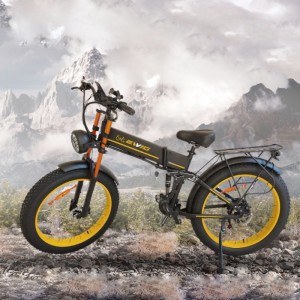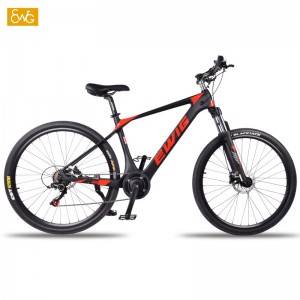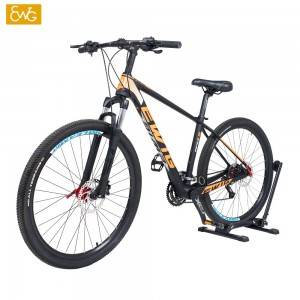Wholesale electric bikes have been soaring in popularity. E-bikes will give you a hand up hills, help enable longer commutes, and let you cruise effortlessly past other cyclists on your Sunday ride. What’s more, they’re opening up cycling to wider age groups and demographics – increasing the amount of bikes on our streets.
There are a multitude of different e-bikes in the market. From folding options to full-on enduro mountain bikes. Just like regular bicycles, there are options for just about every style of riding. Chinese bike Manufacturer is constantly developing lighter, longer lasting batteries with increased range. Price-tags have been falling, too.
So what should we pay attention to when choosing an electric bike?
1. Battery size and power
All e-bikes use different versions of rechargeable lithium-ion batteries. It’s the same technology as used in electric vehicles. They’re quick to charge with a relatively low overall weight.
There are a few different positions where the battery commonly sits on the bike. Most commonly the battery is attached to the down tube, where it can be easily accessed and removed. Sometimes it’s attached on top of a rear rack.Most of EWIG expensive models the battery is integrated into the down tube near the bottom bracket, or sometimes within the seat post. This makes for a cleaner finish, but does come at a cost.
For battery size, a general rule is to simply look out for the best size and quality your budget allows for. The capacity will be measured in Watt hours (wh), which is important when considering the range of your e-bike.
2.Range
Finally, at the same time as deciding on the size of the battery, you also need to consider how much range you want to get from your bike.
Generally speaking, the battery range refers to how many miles a rider can go before needing to recharge the battery. As such, the range you will need will vary depending on your circumstances – say, for example, you plan on using motor assistance to go back and forth to work, you will need a battery with a range capable of making both trips.
Therefore, it’s important to do your homework beforehand, by calculating what the minimum battery range should be for your requirements. The last thing you will want, after all, is to invest in an electric bike that’s unable to get you where you want without its battery dying on the way.
3.Motor
Mid-drive motors are on the bottom bracket (the place where the crank arms attach to the bike frame). Hub-drive motors sit inside the hub of the rear wheel (some are on the front wheel).
Mid-drive motors: Many motors feature this setup, for a variety of reasons. The pedal assist responds with a natural feel, and having the weight of the motor centered and low helps keep the ride balanced and stable.
Hub-drive motors: Rear-wheel hub-drive motors send pedal power straight to the rear wheel, giving you a feeling of being pushed along. Note that changing a flat on the wheel where the hub drive is mounted can be more complex than changing a flat on a standard (or mid-drive) bike. Front-hub drive motors handle somewhat like front-wheel drive cars; they also allow a standard bike drivetrain to be used on the rear of the bike.
4.Weight
To understand the impact weight may have, it’s worth thinking back to the intended use of your e-bike, plus your riding style.
If you’re a road rider looking to ride in groups, then you’ll likely be after a lighter weight bike. This is an area where despite the extra motor assistance, weight will still alter the performance and handling of the bike. Plus, if you did want to tackle some hills without the motor, you won’t be held back by weight.
More realistically, the weight of the bike will have a larger effect when you aren’t riding the e-bike. If you’ve got to cart your bike up flights of stairs, on and off busy trains, or even on to a rack on your car, the extra weight will be hard to manage day-to-day.
wholesale electric bicycle technology has come a long way in the past few years, and they aren’t as heavy as they used to be. With all things, it’s worth trying to visit your bike shop to have a feel of the bike and workout how light you want the bike to be.
5. E-bike equipment
With carbon fiber e-bike, there is no point in worrying about grams of weight or choosing the most expensive systems, but you need to think about quality. While on a regular bike we will have a mileage of 500-1000 kilometres per year, on an e-bike it will be triple that. That's why it's good to choose components with higher quality and durability.
Don't choose a new e-bike based on the shape of the saddle or handlebars. Both of these things determine the comfort of your ride, but they are very individual.
6.Price
No longer a luxury product, e-bikes have been coming down in price. If you want an entry level commuter bike, you can now get hybrid electric bikes for around USD1,000. While this may still sound steep, it’s made more palatable by e-bikes availability on cycle to work schemes.
Ultimately, the price will be dictated by how much you think you’ll use the bike, and of course, your budget. Top-end road and mountain bike models are likely to be made from carbon fiber, and other high-end materials. These may weigh less and perform better, but they’ll cost a lot more.
You may need these before your order
Post time: Nov-02-2022



